If someone followed this post and still hasn't solved their problems (like me), here's what solved it for me:
Step 1: I went to the TCP/IP line in SQL Server Network Configuration, under Protocols for SQLEXPRESS (though you should select your active sql server) and clicked on properties:

Step 2: Then, I made sure that under IP Addresses, the group IP4 is Enabled = "Yes", and that the TCP Port in there is set to 1433 (the default sql server port), like here:

Step 3: Lastly, just as a precaution, I've changed all the other IP group ports to 1433 also, and enabled = "Yes" them from IP2 to IP5 (I saw this one at another computer). I've also changed the IPAll's (the last group) TCP Port to 1433 as well. But that's just me. I'm crazy. Go crazy. It's good for you. Last, make sure Enabled is set to Yes on the protocol tab as well.
and then - Hooray! it worked. Cheers for all the good-hearted people that take their time to solve other people's problems.

